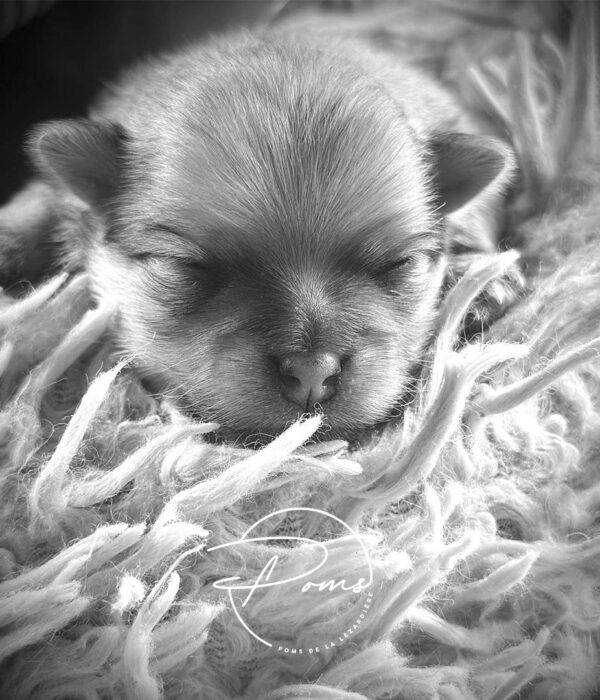The puppy’s first days
In the first few hours of a puppy’s life, its immediate needs are
the warm
the energy supply



The warm
This is one of the most important conditions for the well-being of newborn babies.
The temperature of the nest is particularly important: from 30°C for the first few days to 28°C (decreasing gradually). In the second week, the temperature will fall over the days from 28°C to 25°C. In the third week, the temperature continued to fall, reaching 20°C in the fourth week.
From birth to 3 weeks of age, puppies do not regulate their own internal temperature.It is 3 degrees lower than it will be at 5 weeks. They are therefore highly sensitive to cold. Their body temperature is unstable and depends on the outside temperature, which can predispose them to hypothermia if the ambient temperature is too low. This can also cause them to be rejected by their mother and stop their sucking reflex.
The use of infrared lamps (set at the right height) is a good way to maintain this temperature. Heating mats or hot water bottles can also be used, provided that their use is carefully controlled, as there is a high risk of burns.
If the puppies are well grouped together under the lamp, this suggests that the lamp is at the right height. If the puppies are in the corners of the whelping box, this suggests that the temperature under the lamp is too high or too low.
Whichever system you choose, there must be a cooler place in the nest for the puppies and mother to move around.
The aim is to keep the puppy’s body temperature above 36°C.
Checking the rectal temperature of a puppy that is not suckling or is rejected by its mother is the first thing to do before feeding it. In fact, below 34°C, a puppy can no longer digest. So don’t feed or bottle-feed your baby until it has warmed up.
Hydration
In puppies, it is provided by suckling.
It is essential to put the puppies to the teat as early as possible and as often as possible when the mother does not push them spontaneously. Not only for the systemic immunity provided by the antibodies in colostrum, but also to prevent the risk of dehydration.
The body of a newborn puppy contains around 80% water and has no stratum corneum, so it can become dehydrated very quickly.
If the puppy does not suckle during the first few hours of life, it will need to be hydrated artificially with sugar water or milk administered by bottle or using a small syringe.
In a maternity hospital, it is desirable that the hygrometry, i.e. the quantity of water present in the atmosphere, should be kept at a minimum. not below 55%. The ideal is 65%. It’s easy to place a hygrometer near the farrowing crate. Then simply adjust the ambient humidity by placing water bowls or humidifiers in the room.
An atmosphere that is too dry (less than 35%) exposes the puppies to dehydration, while one that is too humid (more than 80%) facilitates the multiplication of bacteria and can hinder the puppies’ breathing.




Energy
It is supplied in the first few days by colostrum and then milk. It is essential that puppies suckle colostrum as soon as possible after birth. Colostrum reduces the risk of dehydration, provides energy and boosts the puppy’s immunity. It enables the transfer of a systemic immunity when absorbed in the first 8 to 12 hours of life.
More information?



